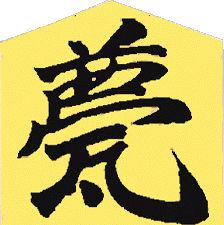|
Far infrared type for home use Coffee Bean Roaster
|
『Far infrared Roaster』 |
|
The home use roaster should satisfy two points; (1) it should roast flavorful
beans and (2)be easily handled.
However, the roasters actually in use are all drum type (hot air type)
roasters. Most of the roasted beans you buy in stores are roasted in drum-type
equipment.
The detail explanation about drum method will be given later but the drum
method roasts by blowing hot air into a drum that contains beans. It is
vital to note the reason why the drum method is the dominant technique.
The reason is that it is suitable for roasting large amounts of beans.
For commercial use, processing power is prioritized over taste.
On the other hand, the far-infrared type is not suitable for commercial
use because it is difficult to roast in large quantities. However, there
is a clear difference in taste between the two.
In a taste comparison of the two methods, the far-infrared type has a mellow
taste, is refreshing, and has a sweet aftertaste. The drum-roasted bean
has a more potent punch from the first taste and coats the throat with
a lingering sharp aftertaste.
The heat source accounts for the difference in taste. The hot air type
uses convection or heat conduction. A temperature difference is required
for these heat propagations. If there is a temperature difference between
two places, heat moves from a high place to a low place, and the amount
of heat transfer is also proportional to the temperature difference. Therefore,
in the hot air method, the air must be heated first to a high temperature
(about 200℃,and the heat is transferred to the beans that are cooler than
the air.
This difference lies in the difference in heat sources. The hot air type uses convection or conduction heat. A temperature difference is required for these heat propagations. If there is a temperature difference, heat will move from high to low, and the amount of heat transfer will be proportional to the temperature difference. Therefore, in the hot air method, the air is first heated to a high temperature of about 200 ° C, and heat is transferred to the beans that are colder than the air. increase.Far-infrared rays, on the other hand, permeate the inside of a substance
by several hundred microns and vibrate the molecules in that area generating
frictional heat, converting light energy into heat energy. It's like having
a heater inside the beans. All the far infrared rays radiated are converted
into heat energy in the beans, so there is no waste. In addition, the heat
flow from the surface to the inside is supplied at a high level, and the
level hardly decreases while heating continues. For this reason, in far-infrared
heating, the temperature rise in the deep part of the object is much faster
than in hot air heating. (Far Infrared Association FAQ20)
As mentioned above, the use of far-infrared rays is the same as having
a heater inside the beans, and the advantage of far-infrared rays is that
the heat rises up the whole beans uniformly at a constant speed and it
is difficult for uneven baking to occur.
This is the reason for the rich aroma and the
mellow taste. In addition, temperature control is easy, and the temperature goes
up to only slightly over 100 ℃.
Unlike commercial roasting, home roasting
does not require the processing of large amounts of beans. This method
prioritizes taste.
Three options are available for using far-infrared rays: (1) charcoal fire,
(2) ceramic containers, or (3) far infrared cooker.
It seems reasonable to put beans in a frying pan and hold them over a charcoal
fire, but this method doesn't work. Metal reflects far-infrared rays from
a charcoal fire so that far-infrared rays do not reach the beans.
The easiest and cheapest tool to use far infrared rays is the ceramic parching pan, as shown in the photo below.
|
| The table on the left is taken from the
research report (2013) "Characteristics of far-infrared emission rate from
various materials" issued by the Nagasaki Ceramics Technology Center. |

|
|
You will notice from the report that pottery emits a large quantity of
far-infrared rays even at relatively low temperatures.
A parching pan emits not only a large amount of far infrared rays, but
is also inexpensive and has excellent heat resistance, and has many advantages
over other materials as a roasting container, such as ease of shaping and
weight.
Now, what kind of advantage can be expected if we can increase the amount
of far infrared rays emitted by taking advantage of the ease of shaping,
which is one of the advantages of roasting?
The more far infrared rays, the larger the heater inside the beans, so
| 1. |
Naturally, roasting is finished earlier and the time required to heat the
roasting pan is reduced. This saves both time and energy.
|
| 2 |
If the heating temperature of the roasting pan can be halved, the heat
load on the electronic equipment can be reduced to 1/2 when an electronic circuit is held above the opening of the roasting pan. This
is an important point.
|
| 3. |
The amount of far infrared rays emitted does not change even if the heating temperature of the parching pan is lowered.
It saves heating energy.
|
| 4. |
With lower temperature of the parching pan, the amount of unnecessary conduction
heat can be suppressed, so that charring is less likely to occur.
With lower temperature of the parching pan, the amount of unnecessary conduction
heat can be suppressed, so that charring is less likely to occur.
|
| 5. |
Since it is not necessary to raise the surface temperature of the beans,
the outer shell of the beans will not be damaged."
This traps the taste and aroma.
|
| 6. |
We have a plan to install motors and
electronic circuits at the top of the roasting opening, which can reduce the
heat load on these electronic devices. |
As mentioned above, the increase of the
amount of far-infrared emission bring us
many advantages.
.
|
|
|
|
|






